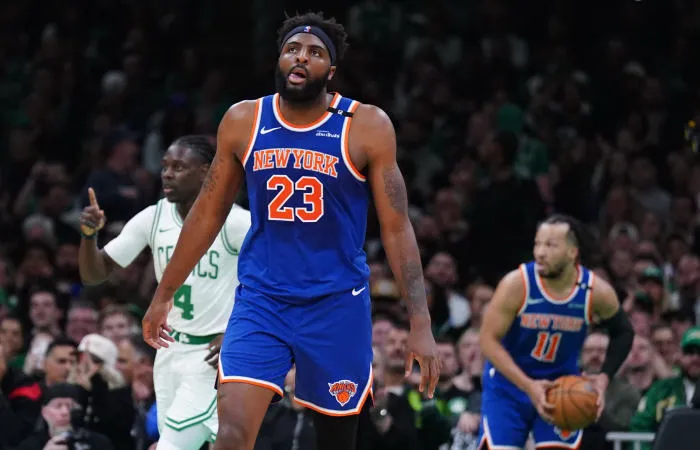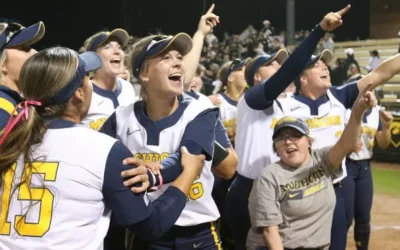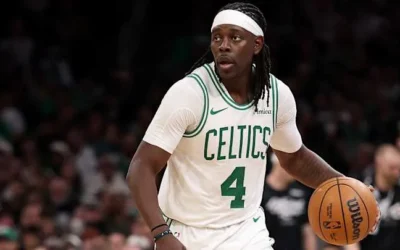Introduction
In the ever-evolving landscape of the NBA, where strategy and adaptability reign supreme, the presence of a dominant defensive player can significantly tilt the balance in favor of a team. Enter Mitchell Robinson, the 7-foot center for the New York Knicks, a towering figure whose defensive prowess has irked opponents, particularly the Boston Celtics. As the Knicks battle for playoff positioning in a fiercely competitive Eastern Conference, Robinson’s unique skills, along with his glaring weaknesses, bring both excitement and anxiety to New York fans.
Defensive Presence: The Heart of the Knicks’ Strategy
Robinson’s impact on the defensive end is undeniable. His towering stature combined with exceptional leaping ability makes him a rim protector par excellence. He leads the Knicks in blocks and alters countless shots by intimidating drivers who dare approach the hoop. The Celtics, known for their offensive versatility and crisp ball movement, have felt the weight of Robinson’s defensive presence in their recent matchups.
In games against the Celtics, Robinson has thwarted their offense with timely blocks and rebounding prowess. He averages over two blocks per game, making him one of the most sought-after shot-blockers in the league. His ability to deter shots at the rim creates valuable opportunities for the Knicks to push in transition, a crucial aspect of their game plan.
The ‘Hack-a-Robinson’ Conundrum
However, for all of Robinson’s strengths on the court, his glaring shortcomings at the free-throw line have become a point of contention. With career averages of under 50% from the charity stripe, opponents have strategically employed the ‘Hack-a-Robinson’ tactic. This method entails fouling Robinson deliberately when he is in a scoring position, forcing him to earn points from the line rather than in the flow of the game.
This strategy has proven detrimental during several crucial games this season. The mental strain of repeatedly stepping to the line, with opposing fans and players counting every missed free throw, seems to have taken a toll on Robinson’s performance. The Knicks, who are vying for a playoff spot, face the risk of becoming overly reliant on their defensive scheme while an opposing tactic continually exploits one of their best players.
Assessing the Impact on Playoff Aspirations
As the regular season progresses, the Knicks are caught in a precarious position. With each game that passes, the margin for error shrinks, particularly when playing against elite teams like the Celtics. Robinson’s defensive impact is critical, but as the playoffs loom closer, the ‘Hack-a-Robinson’ strategy could become a real Achilles’ heel for the team.
The notion of an accompanying weakness is alarming, especially since playoff success often hinges on a player’s ability to perform under pressure. Coaches and analysts alike have begun to question whether the Knicks should reevaluate their strategy surrounding Robinson. Some suggest that it may be time to train him intensively in free-throw shooting techniques or even consider integrating other players more heavily in the rotations to avoid the risk posed by this weakest link.
The Need for Adaptation
In professional sports, adaptability is key. The ability to change tactics on the fly and develop player skills is paramount. The Knicks’ coaching staff must devise a plan to integrate a more balanced scoring strategy that decreases Robinson’s exposure to intentional fouling. Additionally, Robinson himself must embrace the challenge of improving on his free-throw shooting—after all, being a professional athlete comes with the expectation of constant evolution.
Various exercises and drills can assist Robinson in this regard. Narrative discussions among players about the importance of free-throw proficiency can create a positive mindset around the issue. Regular practice routines should now focus on simulating game-like pressure, allowing Robinson to become accustomed to the intensity of the moment and thereby bolstering his confidence.
Public and Coach Perspective
The dialogue surrounding Robinson’s free throw shooting is not limited to fans; coaches and analysts are vocal as well. Head coach Tom Thibodeau is acutely aware of the implications that free-throw shooting possesses for playoff positioning. In recent press conferences, he has expressed confidence in Robinson’s talent but acknowledged the importance of improvement in this area. “Mitchell is our defensive anchor,” Thibodeau stated, “but we need him to convert at the line to stay competitive in close games.”
Recently, analysts have also weighed in, suggesting that the Knicks may need to find a way to make the most of Robinson’s abilities while mitigating the risk associated with him being an ineffective free-throw shooter. This reframing of expectations could empower the coaching staff to alter in-game strategies which would limit Robinson’s exposure to fouling, thus bolstering their playoff chances.
Revisiting the ‘Hack-a-Robinson’ Strategy
The increasing frequency of the ‘Hack-a-Robinson’ strategy raises a pertinent question: should it be permanently retired? The answer is complex, but there are reasonable arguments that suggest it may be time to move away from exploiting a player’s weaknesses and instead focus on utilizing their strengths effectively.
The NBA landscape is continually shifting, and the strategies that teams deploy must adapt to changing player skill sets. As teams analyze opponent tendencies more rigorously, the ‘Hack-a-Robinson’ tactic may become less relevant as players improve their overall game. The focus should shift from penalizing a player’s weaknesses to finding innovative ways to compete against them.
Conclusion
Mitchell Robinson undoubtedly possesses immense potential as a defensive force within the NBA. His ability to impact the game at the rim is outstanding, serving as a vital element of the New York Knicks’ defensive strategy. However, as the playoffs become a reality, the looming specter of his free-throw shooting incapacity presents a monumental challenge.
The Knicks must navigate this situation carefully, focusing on adaptation through skill improvement, innovative coaching strategies, and a commitment to resilience as the season nears its conclusion. As they continue this journey, incorporating lessons learned will prove vital to harnessing the best version of Mitchell Robinson and, ultimately, positioning the franchise for great success.







